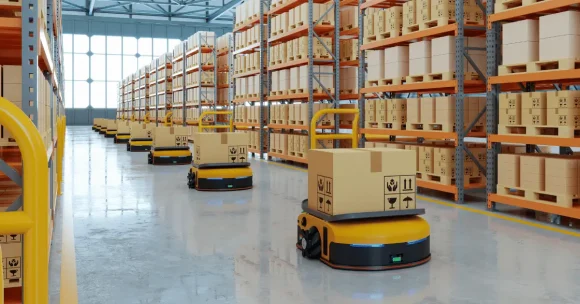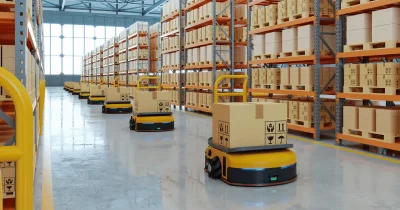The specter of warehouse automation has loomed large in recent years, with the age-old ‘automation will steal jobs’ fear dominating most headlines. A 2020 report from the World Economic Forum claims robotics and automation will displace 85 million jobs by 2025.
When human anxiety about “robots stealing our jobs” set in, very few focus on the other aspect of the report – robotics and automation will also create 97 million new jobs. The warehouse industry is not spared from automation.
“By 2025, employers will divide work between humans and machines equally. Roles that leverage human skills will rise in demand. Machines will be primarily focused on information and data processing, administrative tasks, and routine manual jobs.”
But how will warehouse automation impact jobs?
Warehouse automation and robotics
The reality of automation’s impact on employment, especially in warehousing, is far more nuanced than the alarmist narratives suggest. The industry is grappling with severe labor shortages amidst the increased demand for on-the-dot fulfillment.
Under the lens of these challenges, automation can be a lifeline for struggling warehouses while enhancing (instead of replacing) human jobs.
The realities of warehouse work
It’s not always easy sailing, as the industry faces significant challenges in attracting and retaining employees. Despite a 4.25% wage increase, 73% of warehouse operators say they can’t find enough labor.
According to the State of Warehouse Labour report, “businesses have tried a variety of tactics to recruit and retain staff.” These tactics include:
- Promotions.
- Extra time off.
- Increased pay.
- Flexible schedules.
- Incentives and rewards.
- Additional workplace benefits.
Despite more than a third of businesses raising salaries during 2022, they still couldn’t close staffing gaps. It escalated to the point where “34% of respondents had to forgo business due to a lack of available labor in 2022,” the report states.
Not to mention the safety aspect: In 2020, according to Statista, the average injury rate for warehouse workers was four injuries per 100 employees. Amazon staff had it worse, with 6.5 injuries per 100 workers.
Looming labor crisis
This lack of labor continues to cause major bottlenecks in order fulfillment. In fact, 99% (of the 200 brands interviewed by Fabric) said they lost sales due to insufficient fulfillment capacity.
Many supply chain stakeholders struggled to recover from the COVID-19 pandemic. Costco is a prime example. As the pandemic was tapering down, the warehouse chain implemented purchase limits on toilet paper, bottled water, and other essential supplies.
While the limits imposed at the start of the pandemic were due to outstripped supply, the latter purchase limits were due to shipping delays and labor shortages, as reported by CNBC at the time.
The labor crisis and pandemic forced the industry to consider other avenues, with Accenture reporting that three out of five companies are now turning to warehouse automation and robotics.
“The right level of automation and autonomy will not only enable faster, safer, and more efficient day-to-day warehouse operations. It will also cut costs and improve delivery times, creating a faster, leaner, more scalable, and sustainable operation,” the report reads.
Automation a lifeline
McKinsey and Company’s research shows warehouse automation is “imperative for sustainable growth.” From adopting autonomous mobile robots (AMRs) to supply chain as a service (SCaaS) models, the industry is poised to boom within the next decade.
Rueben Scriven, research manager at Interact Analysis, says, “warehouse construction will increase and result in an uptick in warehouse automation order intake in the latter half of 2024 and into 2025.”
Scriven predicts that by 2027, 26% of warehouses will be automated. And those warehouses will still need workers since robots “require physical manipulation.”
NOW READ: Warehouse automation: Newsmakers and 2024 outlook
About the author
Cheryl has contributed to various international publications, with a fervor for data and technology. She explores the intersection of emerging tech trends with logistics, focusing on how digital innovations are reshaping industries on a global scale. When she's not dissecting the latest developments in AI-driven innovation and digital solutions, Cheryl can be found gaming, kickboxing, or navigating the novel niches of consumer gadgetry.











